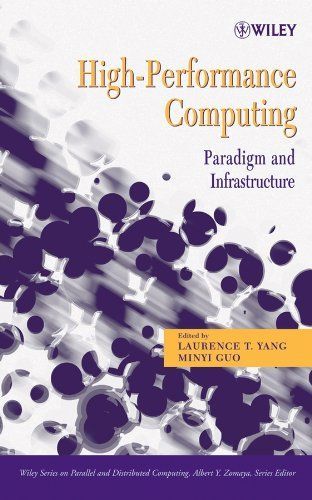
High-Performance Computing Paradigm and Infrastructure
The state of the art of high-performance computing Prominent researchers from around the world have gathered topresent the state-of-the-art techniques and innovations inhigh-performance computing (HPC), including: * Programming models for parallel computing: graph-orientedprogramming (GOP), OpenMP, the stages and transformation (SAT)approach, the bulk-synchronous parallel (BSP) model, MessagePassing Interface (MPI), and Cilk * Architectural and system support, featuring the code tilingcompiler technique, the MigThread application-level migration andcheckpointing package, the new prefetching scheme of atomicity, anew "receiver makes right" data conversion method, and lessonslearned from applying reconfigurable computing to HPC * Scheduling and resource management issues with heterogeneoussystems, bus saturation effects on SMPs, genetic algorithms fordistributed computing, and novel task-scheduling algorithms * Clusters and grid computing: design requirements, gridmiddleware, distributed virtual machines, data grid services andperformance-boosting techniques, security issues, and openissues * Peer-to-peer computing (P2P) including the proposed searchmechanism of hybrid periodical flooding (HPF) and routing protocolsfor improved routing performance * Wireless and mobile computing, featuring discussions ofimplementing the Gateway Location Register (GLR) concept in 3Gcellular networks, maximizing network longevity, and comparisons ofQoS-aware scatternet scheduling algorithms * High-performance applications including partitioners, runningBag-of-Tasks applications on grids, using low-cost clusters to meethigh-demand applications, and advanced convergent architectures andprotocols High-Performance Computing: Paradigm and Infrastructure is aninvaluable compendium for engineers, IT professionals, andresearchers and students of computer science and appliedmathematics.